They might not be raindrops on roses or whiskers on kittens, but that doesn’t mean that we love them any less. Welcome back to My Favorite Things, the weekly column where we grab someone in speculative circles to gab about the greatest in geek. This week, we sit down with James Chambers, whose On the Night Border just made the Stoker Preliminary Ballot for Superior Achievement in a Fiction Collection!
What does James love when he’s not writing the very things to give you nightmares? Spoiler alert: a show that brings UFOs and aliens to life, a psychedelic comic, a haunting novella, the truth behind the Black Lagoon, and unearthing forgotten folk horror. Curious? Read on to learn more!
I am a scatterbrained completist when it comes to favorite things. I often jump to new favorites before finishing with past ones. I frequently find myself behind on the latest things or stalled in the midst of storylines while dodging online spoilers like Frogger dodges cars. I love all forms of storytelling, though, and like to absorb as much as I can in different media. As an author I find it instructive and inspiring. As a fan I simply enjoy spending time in someone else’s creative world. I cast a wide net across books, comics, film, music, television, and whatever else crosses my path so picking a handful current favorites is a challenge but a fun one.
From the Small Screen
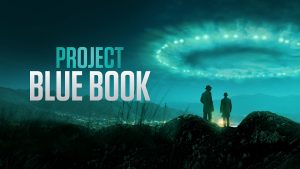
I’m not a big television watcher but I always find a few series interesting enough to follow. Recently I discovered the History Channel’s drama series Project Blue Book, inspired by the work of astronomer and ufologist, Dr. J. Allen Hynek, and a real U.S. Air Force program to investigate UFO reports. Set in the 1950s, it digs into aliens, government coverups, and paranoia. Yeah, I’ve seen all this stuff before, and it has a heavy X-Files vibe, but I remember watching the original Project Blue Book with my parents in the 1970s. That show, also known as Project U.F.O., was boring and in desperate need of more UFOs and aliens. This incarnation delivers. Plus, it stars Aiden Gillen (who played Little Finger on Game of Thrones) as Dr. Hynek, and he’s excellent in the role. The show (so far) leans heavily into skepticism and debunking classic alien encounters, such as the Flatwoods Monster, which appeals to my sensibilities about this stuff, but it also delivers on the speculative elements with an ongoing subplot involving men in black and sinister military secrets. It provides an entertaining return to many of the classic weird encounters that I read about as a child and which spurred my interest not only in speculative fiction but in science. Yes, it’s a something of nostalgia trip for me, but for those who don’t already know these stories, it’s also a great introduction.
Four-Color Science Fiction
 Comic books were my gateway to fantastic fiction. I had horror, science fiction, and superhero comics on hand before I ever encountered any horror or science fiction books, movies, or TV shows, and one of the most interesting for me has always been Green Lantern. As part of an intergalactic police force, he’s perhaps the most concretely science-fiction based of the classic superheroes. The character is most exciting when the creators emphasize those themes over the superhero stuff. That’s what the current Green Lantern series does, thanks to Grant Morrison and Liam Sharp — with the caveat that the science-y stuff in this series is really, really weird and psychedelic, as is to be expected from Morrison, best known for surreal comics, such as Doom Patrol and The Invisibles. So far, the series has played with the nature of God and evil in cosmic terms, introduced some wild new alien lifeforms and societies, and even revived a bizarre villain from the 1970s, Starbreaker, the Cosmic Vampire. Morrison delivers science fiction through the uniquely warped lens of his peculiar imagination for unpredictable stories where the throwaway ideas in the background could be fodder for entire story lines. The art by Liam Sharp, rendered with tremendous detail and a heavy influence of classic fantasy illustration, helps create this series’ sense of existing in its own weird continuity. This is a gem among current mainstream comics, one that seems to reflect the creators’ vision more than the corporation’s in a way few comics do these days.
Comic books were my gateway to fantastic fiction. I had horror, science fiction, and superhero comics on hand before I ever encountered any horror or science fiction books, movies, or TV shows, and one of the most interesting for me has always been Green Lantern. As part of an intergalactic police force, he’s perhaps the most concretely science-fiction based of the classic superheroes. The character is most exciting when the creators emphasize those themes over the superhero stuff. That’s what the current Green Lantern series does, thanks to Grant Morrison and Liam Sharp — with the caveat that the science-y stuff in this series is really, really weird and psychedelic, as is to be expected from Morrison, best known for surreal comics, such as Doom Patrol and The Invisibles. So far, the series has played with the nature of God and evil in cosmic terms, introduced some wild new alien lifeforms and societies, and even revived a bizarre villain from the 1970s, Starbreaker, the Cosmic Vampire. Morrison delivers science fiction through the uniquely warped lens of his peculiar imagination for unpredictable stories where the throwaway ideas in the background could be fodder for entire story lines. The art by Liam Sharp, rendered with tremendous detail and a heavy influence of classic fantasy illustration, helps create this series’ sense of existing in its own weird continuity. This is a gem among current mainstream comics, one that seems to reflect the creators’ vision more than the corporation’s in a way few comics do these days.
Books Without Pictures
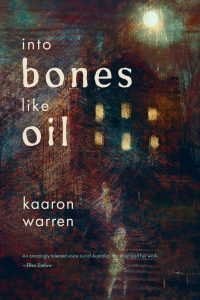 One the literary front one of my favorite recent reads has been Kaaron Warren’s novella Into Bones Like Oil, published last year. Honestly, it’s been a good run for me reading-wise lately so it’s hard to pick one favorite. I began seeking out Warren’s work after reading Tide of Stone last year, and I’m utterly hooked on her writing, which is inventive, evocative, and unique, and always graced with wonderful prose. This novella follows Dora, a woman seeking escape from the grief and tragedy of her life, as she checks herself into an odd boarding house reputed to help people like her, only to discover the place is full of strange residents. Situated above a beach where a shipwreck once washed ashore, the boarding house is haunted by the past as much as it is by the needs of its residents. The story melds tragic history with the sorrows of the present and ties them together thematically with a supernatural element. Into Bones Like Oil is a captivating story that unfolds in compelling fashion without ever peeling back the curtain all the way on its mysteries. The reader, like the characters, is left haunted.
One the literary front one of my favorite recent reads has been Kaaron Warren’s novella Into Bones Like Oil, published last year. Honestly, it’s been a good run for me reading-wise lately so it’s hard to pick one favorite. I began seeking out Warren’s work after reading Tide of Stone last year, and I’m utterly hooked on her writing, which is inventive, evocative, and unique, and always graced with wonderful prose. This novella follows Dora, a woman seeking escape from the grief and tragedy of her life, as she checks herself into an odd boarding house reputed to help people like her, only to discover the place is full of strange residents. Situated above a beach where a shipwreck once washed ashore, the boarding house is haunted by the past as much as it is by the needs of its residents. The story melds tragic history with the sorrows of the present and ties them together thematically with a supernatural element. Into Bones Like Oil is a captivating story that unfolds in compelling fashion without ever peeling back the curtain all the way on its mysteries. The reader, like the characters, is left haunted.
 I’m going to sneak in another favorite read, a non-fiction book that excited and delighted me. Mallory O’Meara unearthed the fascinating history of artist and designer Milicent Patrick for The Lady of the Black Lagoon: Hollywood Monsters and the Lost Legacy of Milicent Patrick. When I first heard about this book, I knew I would read it. The Creature from the Black Lagoon is my favorite of the Universal Monster movies, and I’ve long considered the look of the Creature the greatest movie monster design of all time. To then learn, as the book recounts, that the woman who created it grew up on William Randolph Hearst’s San Simeon estate where her father oversaw much of the construction, was one of the first two female illustrators at Disney, was the first woman to work in special effects makeup at Universal — and then left her Hollywood career after Bud Westmore (her boss when she designed the creature) fired her for overshadowing him and robbed her of her proper credit — puts a classic film in a startling new perspective. It also adds a new hero to the history of horror cinema. It’s way past time this story should’ve been told. For a bonus, Milicent also designed the Metaluna Mutant in This Island Earth.
I’m going to sneak in another favorite read, a non-fiction book that excited and delighted me. Mallory O’Meara unearthed the fascinating history of artist and designer Milicent Patrick for The Lady of the Black Lagoon: Hollywood Monsters and the Lost Legacy of Milicent Patrick. When I first heard about this book, I knew I would read it. The Creature from the Black Lagoon is my favorite of the Universal Monster movies, and I’ve long considered the look of the Creature the greatest movie monster design of all time. To then learn, as the book recounts, that the woman who created it grew up on William Randolph Hearst’s San Simeon estate where her father oversaw much of the construction, was one of the first two female illustrators at Disney, was the first woman to work in special effects makeup at Universal — and then left her Hollywood career after Bud Westmore (her boss when she designed the creature) fired her for overshadowing him and robbed her of her proper credit — puts a classic film in a startling new perspective. It also adds a new hero to the history of horror cinema. It’s way past time this story should’ve been told. For a bonus, Milicent also designed the Metaluna Mutant in This Island Earth.
Silver Screen Faves
 I’m digging the current revival of interest in the “folk horror” horror subgenre. Definitions of folk horror vary, but it is generally typified by films such as The Wicker Man (1973) and The Ritual (2017), novels such Harvest Home by Thomas Tryon and Wilding Hall by Elizabeth Hand, and, of course, Shirley Jackson’s classic story, “The Lottery.” Whenever a subgenre comes under renewed scrutiny, overlooked gems and forgotten-but-influential works resurface, presenting a terrific opportunity for rediscovery. Howard David Ingham’s We Don’t Go Back: A Watcher’s Guide to Folk Horror, has become my go-to reference for folk horror films. This film-by-film exploration of the genre touches on many films I’ve seen and many others I haven’t. It catalogs them into a coherent survey of the origins and evolution of folk horror in television and film. So far it has directed me to two movies I wasn’t aware of, both of which I found fascinating: The Blood on Satan’s Claw (1970) and VIY (1967). The former, a British production, features some stellar cinematography and music, which Ingham deftly analyzes in his critique, and the latter, a Russian film based on a story by Nikolai Gogol, delivers a supernatural satire that uses the setting of a peasant village to depict Soviet-era themes. In Claw, a peasant village in the English countryside is overrun by evil when a ploughman digs up the corpse of a demon, which then grows parts of itself on the bodies of local youth to reconstitute itself. In VIY, a seminarian encounters a witch and later finds himself consigned to sit by her corpse and pray for three nights after she dies. Each film enjoys a distinct cinematic style and delivers some harrowing and bizarre visuals. I’m looking forward to finding more of these forgotten folk horror stories.
I’m digging the current revival of interest in the “folk horror” horror subgenre. Definitions of folk horror vary, but it is generally typified by films such as The Wicker Man (1973) and The Ritual (2017), novels such Harvest Home by Thomas Tryon and Wilding Hall by Elizabeth Hand, and, of course, Shirley Jackson’s classic story, “The Lottery.” Whenever a subgenre comes under renewed scrutiny, overlooked gems and forgotten-but-influential works resurface, presenting a terrific opportunity for rediscovery. Howard David Ingham’s We Don’t Go Back: A Watcher’s Guide to Folk Horror, has become my go-to reference for folk horror films. This film-by-film exploration of the genre touches on many films I’ve seen and many others I haven’t. It catalogs them into a coherent survey of the origins and evolution of folk horror in television and film. So far it has directed me to two movies I wasn’t aware of, both of which I found fascinating: The Blood on Satan’s Claw (1970) and VIY (1967). The former, a British production, features some stellar cinematography and music, which Ingham deftly analyzes in his critique, and the latter, a Russian film based on a story by Nikolai Gogol, delivers a supernatural satire that uses the setting of a peasant village to depict Soviet-era themes. In Claw, a peasant village in the English countryside is overrun by evil when a ploughman digs up the corpse of a demon, which then grows parts of itself on the bodies of local youth to reconstitute itself. In VIY, a seminarian encounters a witch and later finds himself consigned to sit by her corpse and pray for three nights after she dies. Each film enjoys a distinct cinematic style and delivers some harrowing and bizarre visuals. I’m looking forward to finding more of these forgotten folk horror stories.
One of my favorite science fiction films of recent vintage is Mute (2018). This futuristic noir, directed by Duncan Jones, features Alexander Skarsgard as Leo, a devout Amish man left unable to speak from a childhood injury who finds himself working as a strip club bartender in a corrupt Berlin underworld. When Leo’s girlfriend disappears, he searches for her and delves deep into the city’s truly revolting underbelly. There he encounters some of the worst criminals, including Cactus Bill, a disgraced American surgeon, played by Paul Rudd in the most un-Paul-Rudd role ever. Rudd’s absolutely menacing performance proves his range as an actor. And although Mute received tepid reviews from critics, it’s a remarkably dark science fiction movie filled with strong characters, top-notch performances, and great tension. It’s a noir, though, so don’t expect a bright ending.
 Award-winning author of horror, crime, fantasy, and science fiction, James Chambers received the Bram Stoker Award® for the graphic novel, Kolchak the Night Stalker: The Forgotten Lore of Edgar Allan Poe and is a three-time Bram Stoker Award nominee. He is the author of the collections On the Night Border, described by Booklist as “a haunting exploration of the space where the real world and nightmares collide,” and Resurrection House as well as the Corpse Fauna novella series and the dark urban fantasy novella, Three Chords of Chaos. Publisher’s Weekly gave his Lovecraftian collection, The Engines of Sacrifice, a starred review and called it “…chillingly evocative.” His website is: www.jameschambersonline.com and he can be found on Instagram, Twitter, and Facebook.
Award-winning author of horror, crime, fantasy, and science fiction, James Chambers received the Bram Stoker Award® for the graphic novel, Kolchak the Night Stalker: The Forgotten Lore of Edgar Allan Poe and is a three-time Bram Stoker Award nominee. He is the author of the collections On the Night Border, described by Booklist as “a haunting exploration of the space where the real world and nightmares collide,” and Resurrection House as well as the Corpse Fauna novella series and the dark urban fantasy novella, Three Chords of Chaos. Publisher’s Weekly gave his Lovecraftian collection, The Engines of Sacrifice, a starred review and called it “…chillingly evocative.” His website is: www.jameschambersonline.com and he can be found on Instagram, Twitter, and Facebook.
Would you like to write about YOUR favorite things for Speculative Chic? Check out our guidelines and fill out the form here.

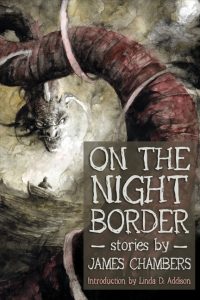
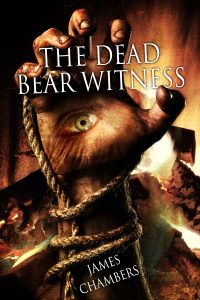


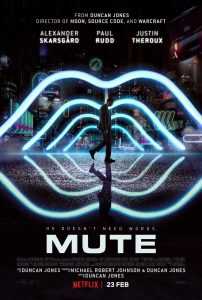
[…] Our special guest for My Favorite Things is author James Chambers, and we’re celebrating his collection On the Night Border, which just made the preliminary ballot for the Stoker Awards! What can you expect from this week’s offering? How about a drama inspired by a real-life astronomer and ufologist; the power of a green lantern’s light; a boarding house with residents who aren’t what they seem; the lost legacy of the woman behind one of horror’s classic monsters; horror docs and satire, and more! Find it all here. […]
[…] We have re-released books 2 and 3 in James Chambers’s Corpse Fauna Series: Tears of Blood and The Dead in Their Masses. The fourth and final book in the series, Eyes of the Dead, is due out in October of this year. Here is a guest post he wrote for Speculative Chic. […]
I totally forgot about Muse, James, until reading about it in your favorite things. It’s been on my to-watch list for a while. Congrats on the success of On the Night Border! And, thanks for sharing with us.